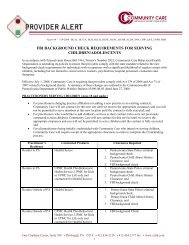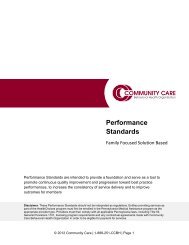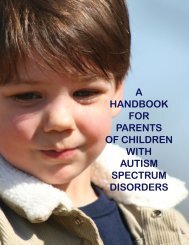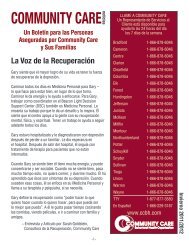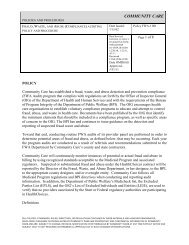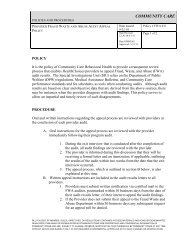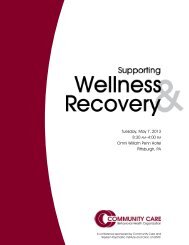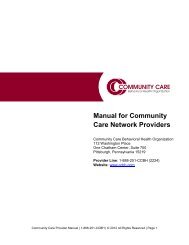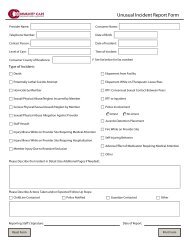a handbook for parents of children with autism spectrum disorders
a handbook for parents of children with autism spectrum disorders
a handbook for parents of children with autism spectrum disorders
You also want an ePaper? Increase the reach of your titles
YUMPU automatically turns print PDFs into web optimized ePapers that Google loves.
APPENDIX D:<br />
GLOSSARY<br />
PT: Physical Therapy<br />
Self-Stimulatory: A term <strong>for</strong> behaviors whose primary purpose appears to be to<br />
stimulate one’s own senses. An example is rocking one’s body. Many people <strong>with</strong><br />
Autism report that some “self stims” may serve a regulatory function <strong>for</strong> them (e.g.,<br />
calming, adding concentration, shutting out an overwhelming sound). Other examples<br />
include hand-flapping, toe-walking, spinning, and echolalia, which is the uncontrollable<br />
and immediate repetition <strong>of</strong> words spoken by another person.<br />
Sensorimotor: Pertaining to brain activity other than automatic functions (respiration,<br />
circulation, sleep) or cognition. Sensorimotor activity includes voluntary movement and<br />
senses like sight, touch, and hearing.<br />
SI/Sensory Integration: This is a term applied to the way the brain processes sensory<br />
stimulation or sensation from the body and then translates that in<strong>for</strong>mation into specific,<br />
planned, coordinated motor activity.<br />
SIT: Sensory Integration Therapy<br />
SLP or S-LP Speech-Language Pathologist: An individual who specializes in the area<br />
<strong>of</strong> human communication. The focus is on communication, not speech, to increase the<br />
child’s ability to impact and to understand his or her environment.<br />
SSI-DC: Supplemental Security Income-Disabled Child, US program.<br />
STAP/Summer Therapeutic Activities Program: An intensive summer treatment<br />
program <strong>for</strong> <strong>children</strong> <strong>with</strong> behavioral and/or emotional issues, <strong>of</strong>ten delivered in a<br />
camp-like setting.<br />
Present<br />
in<strong>for</strong>mation<br />
visually as well<br />
as verbally.<br />
Combine<br />
the spoken<br />
word <strong>with</strong><br />
photographs<br />
and pictures,<br />
sign language,<br />
symbols, or<br />
gestures to<br />
help your child<br />
make his or<br />
her needs,<br />
feelings, or<br />
ideas known.<br />
Try to show<br />
your child<br />
affection in as<br />
many ways<br />
as possible.<br />
Though<br />
some kids<br />
<strong>with</strong> Autism<br />
have trouble<br />
receiving and<br />
expressing<br />
affection,<br />
they can still<br />
benefit from<br />
a nurturing<br />
parent.<br />
TSS/Therapeutic Staff Support: Services or worker, refers to direct services available<br />
through BHRS.<br />
- Page 35 -



